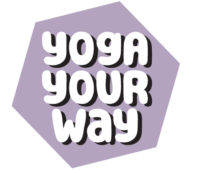Is there a science behind the anecdotal evidence that yoga is good for what ails you? I recently attended a very interesting conference about yoga and science. The presenters, who were all MDs and PhDs, discussed their research applying yoga for many issues and conditions, such as insomnia, PTSD, and stress. And the results have been very positive. This is very exciting for me as a yoga therapist! It’s clear that the ancient yogis knew a thing or two about how our bodies and minds work, even though they didn’t have the advantage of all the current scientific knowledge, techniques, and research.
Here are a few highlights:
Dr. Stephen Porges, who is not a yoga teacher, therapist, or practitioner, told us about his Polyvagal theory, which seems to have a direct correlation to yoga. I have been reading about this theory and its applications to yoga, and though I have to read a lot more to really absorb it, I will try to give a brief description of one small piece of the theory, as I understand it, and will hopefully not oversimplify or mangle the meaning!
Dr. Porges posits that the vagus nerve controls different responses to the environment based on our evolutionary history. The oldest, reptilian response is immobility, or freezing – when faced with immanent danger, the body shuts down and feigns death so that perhaps the predator will lose interest. The next level is fight or flight, which came later in evolution, and which requires more resources – the endocrine system pumps substances into the blood to mobilize and energize, at the same time temporarily shutting down functions that aren’t essential to the task at hand (such as digestion). And finally, there is the level of social engagement, shared only by mammals, which made cooperative behavior possible. Different neural pathways between the vagus nerve and the brain control these levels of response. Several people who work with trauma and PTSD, including Bessel van der Kolk, a psychiatrist who has done much work using yoga techniques in treating PTSD, have correlated the reptilian freeze response with the dissociation often experienced by people who have been traumatized.
Another presenter was Dr. Sat Bir Khalsa, an assistant professor of medicine at Harvard Medical School, and a longtime Kundalini yogi, has done a lot of research in the area of mind-body medicine, including sleep and anxiety. He discussed heart-rate variability, or HRV, (the variation in time from heartbeat to heartbeat – more variation shows more resilience) as a measure of “vagal tone.” And speaking of HRV: the American Viniyoga Institute, the organization that trained me, conducted a study several years ago which involved teaching yoga for stress reduction to Aetna Insurance employees (I taught these classes for 5 years at Aetna in Hartford). One control group did mindfulness meditation, and another was given something to read about meditation and stress. HRV was one of several measures of success and HRV was indeed higher in those who attended the yoga classes.
Dr. Khalsa also led a pranayama (mindful, controlled breathing) session with the participants of the conference. He gave us a simple technique: inhale in 4 sniffs, exhale in 8 sniffs. He instructed inhale starting at the belly and then moving upward, which is different from the Viniyoga pattern that I prefer, so I adapted it to use the Viniyoga pattern. In the session, we did this practice for approximately 10 minutes. I found myself in a comfortable, almost dreamy state, during and after the session. My son uses pranayama to ease his anxiety, so I asked him to try it. He reported to me that it made the practice much easier. He likened its effect to that of training wheels on a bike: he said that normally he has trouble keeping his focus on breathing, and sometimes feels anxious that he won’t be able to sustain long breaths. But the sniffing helped him to stay on track.
So here’s how I’d describe it:
Start by doing some smooth breaths but focus on the movement of air downward as you inhale, and movement of air upward as you exhale. Inhaling, expand from the solar plexus, to the navel, to the pubic bone, and as you exhale, contract from the pubic bone to the navel to the solar plexus.
Then start sniffing: as you inhale, do a quick sniff inward, focusing on the solar plexus. Second sniff, focus on the navel, third, on the center of the lower abdomen, and fourth, on the pubic bone. Then come back up, taking 2 sniffs at each of these points. Try this for a few minutes. Let me know if you feel calmer!
